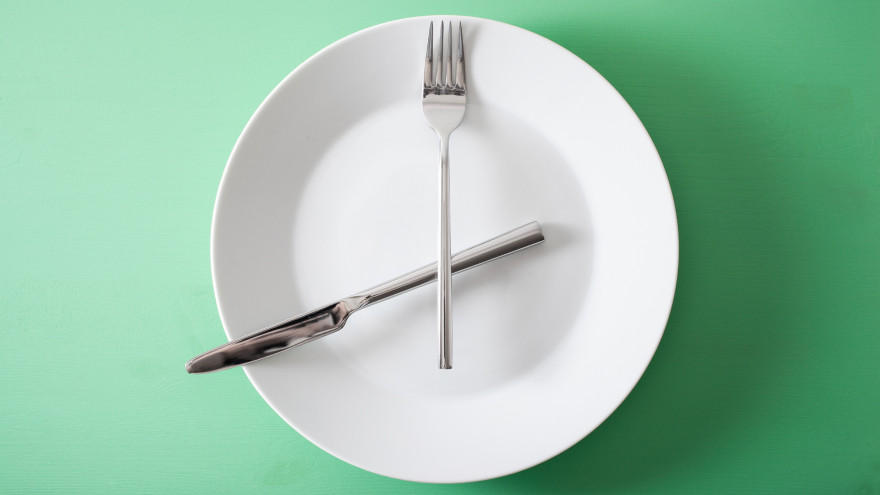Intermittent Fasting (IF), or periodic fasting, is a diet in which you alternate periods of fasting with periods of eating. The goal of IF is to create a healthy eating pattern and to lose body fat. It's not a diet. A diet mainly tells you what you eat. IF tells you when you eat. What you eat is up to you. Of course, the progression in weight loss also depends on what you eat. The lower the number of calories, the faster you will lose weight. There are a number of methods including the Leangains method, the Warrior diet and Alternate day fasting.
Leangain's method
This is the most common way of IF. The day is divided into a fasting period and an eating period. The usual proportions are a period of 4 to 8 hours of eating and a period of 16 to 20 hours of fasting per day. You should therefore not take in calories during the fast. Much of the time you are fasting is (normally) during your sleep.
Warrior diet
As an exception to the rule, you can see this eating pattern as a diet. For a period of 20 hours you only have light snacks at your disposal, such as fruit. After these 20 hours you have 4 hours in which you can eat freely. These 4 hours are often the last 4 hours before going to sleep.
Alternate day Fasting
The third method is Alternate day fasting. This means that you maintain a normal diet one day, followed by one day in which you only eat 20% of the calories.
By modifying these methods slightly, there are of course many other variations.
IF generally leads to calorie restriction: you eat less than you would with a usual diet, creating an energy deficit and thus losing weight. By setting an eating period, it is easy to control what you are getting. During that period you are mainly concerned with getting your meals in. This ensures that you have less time for and need for snacks.
Obstacles
You will notice that you are very hungry in the beginning. After a few weeks, this will change. This is because your body learns to cope with an empty stomach. Your body learns to distribute the energy better. Scheduling your meals can be tricky, as most people spend large parts of their day at work or school. One tip is to prepare meals the night before. In addition, you may come across a number of social obstacles, for many the biggest stumbling block. Drink, pie, cheese, and sausage don't fit the IF's pattern, no matter how much your grandmother or aunt would like them to. Loss of strength is also an obstacle that must be overcome. Of course this differs per person, but often an adjusted dietary pattern such as IF (especially in the initial phase) is often accompanied by loss of strength, as the body has difficulty to retain energy for (heavy) efforts.
Tips & Tricks
- Determine the duration of your eating period in advance. You can always adjust this if you need more or less time for it. For example, start with a time frame of 8 hours in which you are allowed to eat and gradually reduce this. Also set the start and end times when you can eat.
- When you have determined the duration and time of your eating period, you can determine the time of your training. Exercising on an empty stomach can lead to faster fat loss. On the other hand, a meal can ensure that you have more energy during your training. Consider using BCAAs to combat muscle breakdown.
- Make sure to have most of your carbohydrate intake right after your workout. This way, your muscles are better nourished and recover faster.



